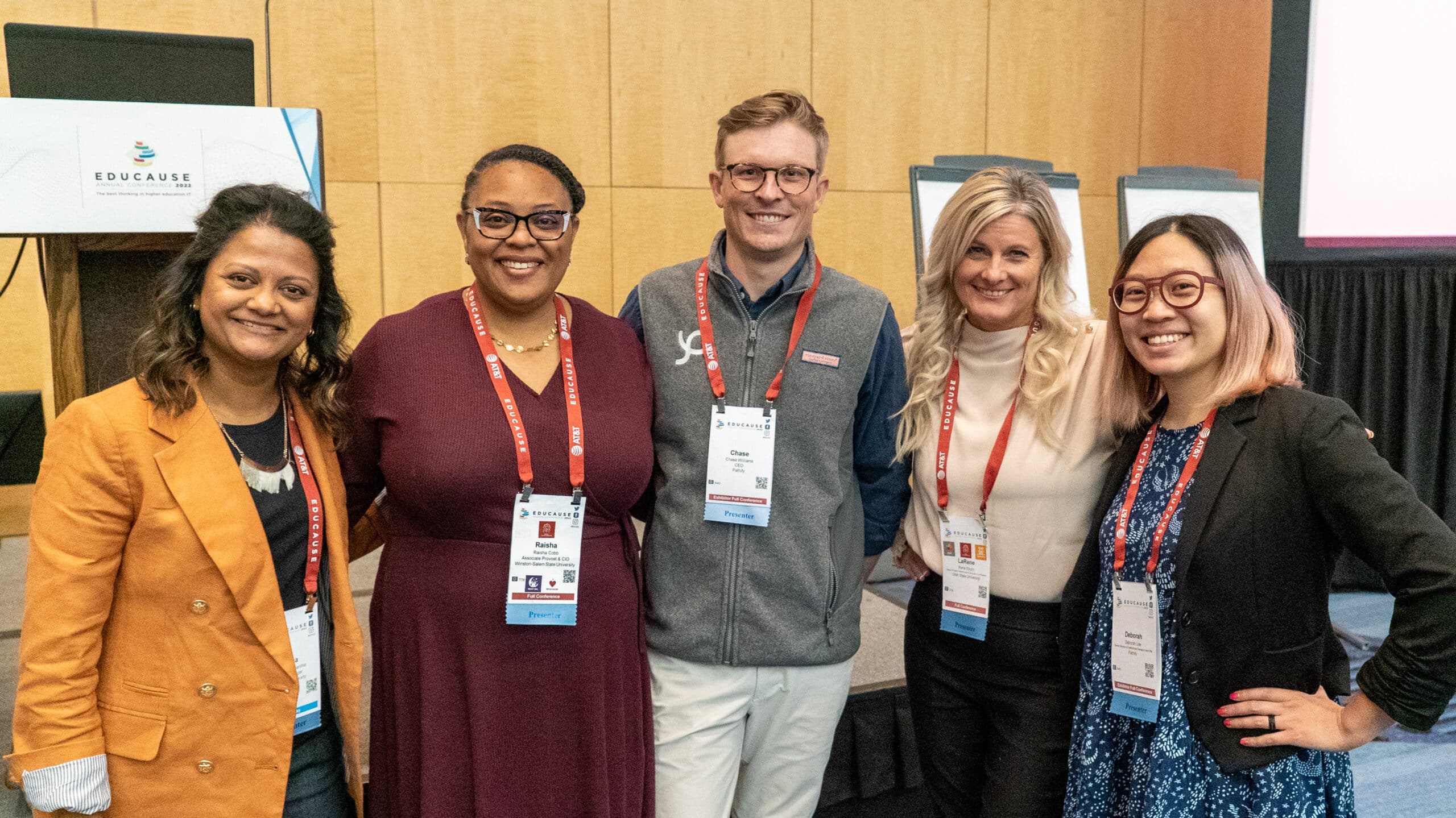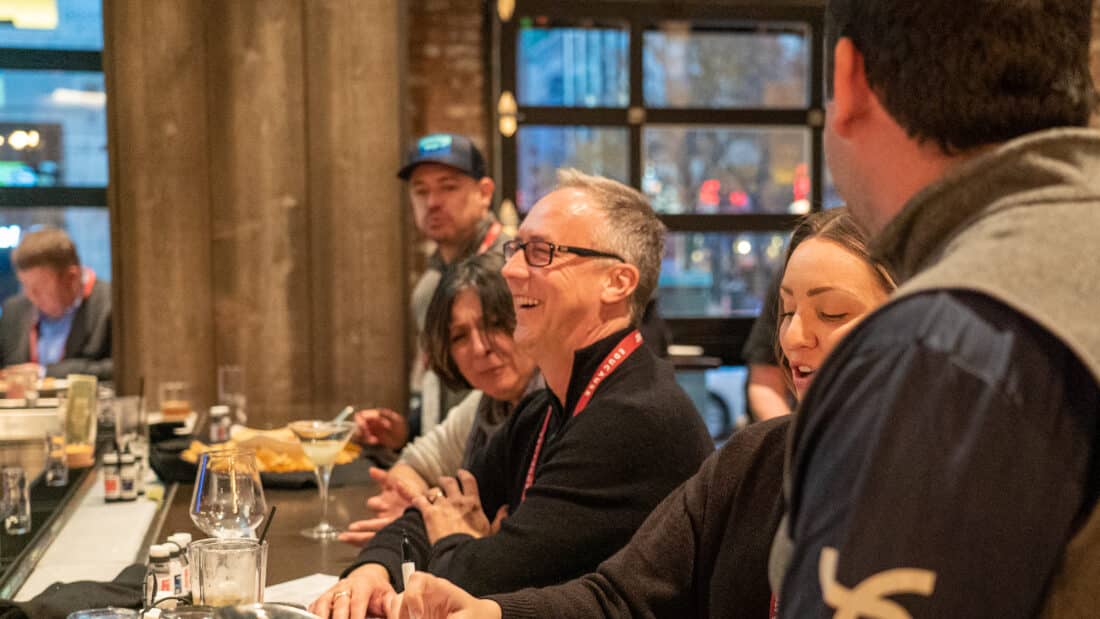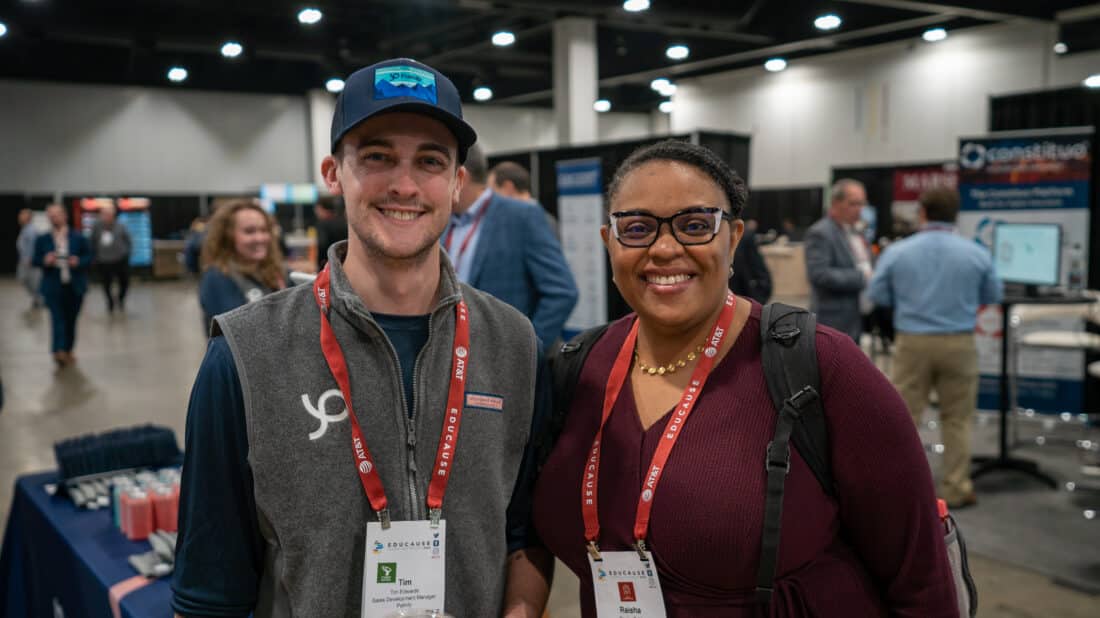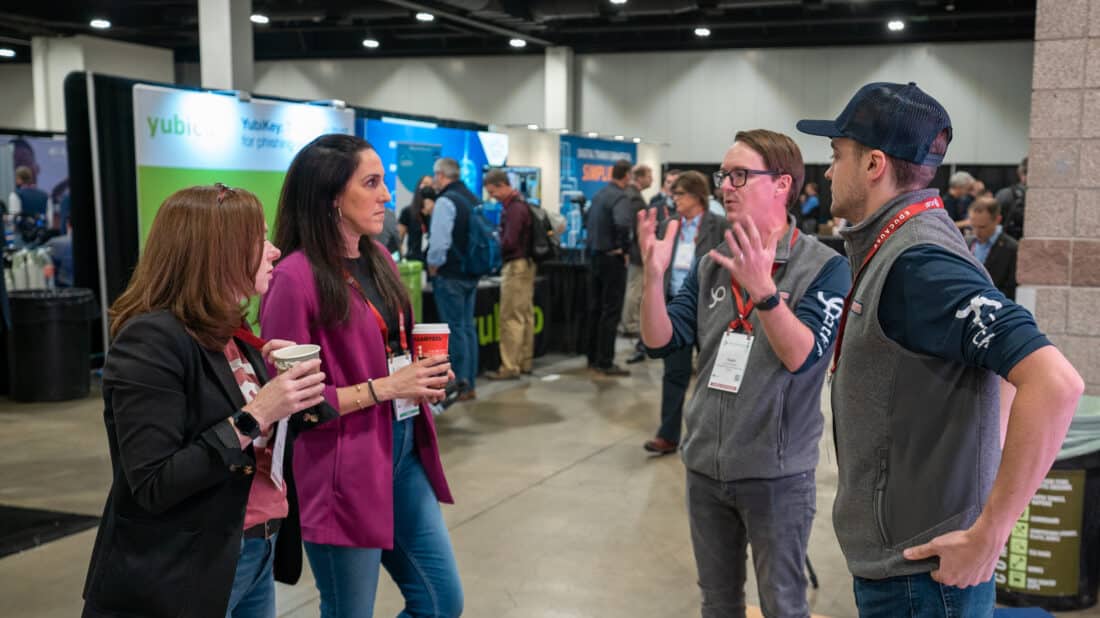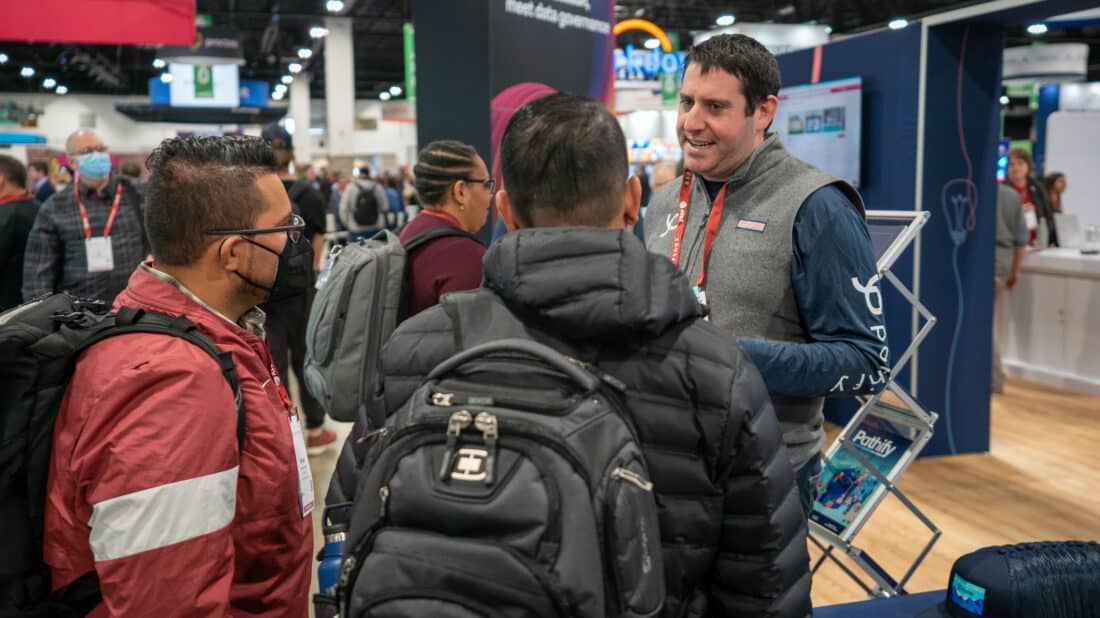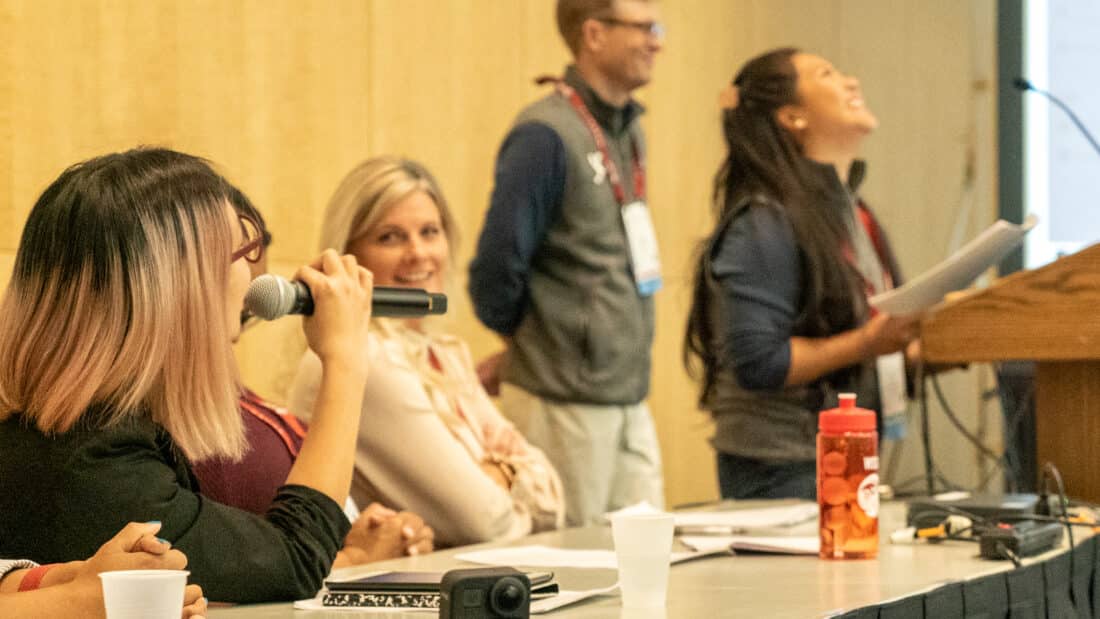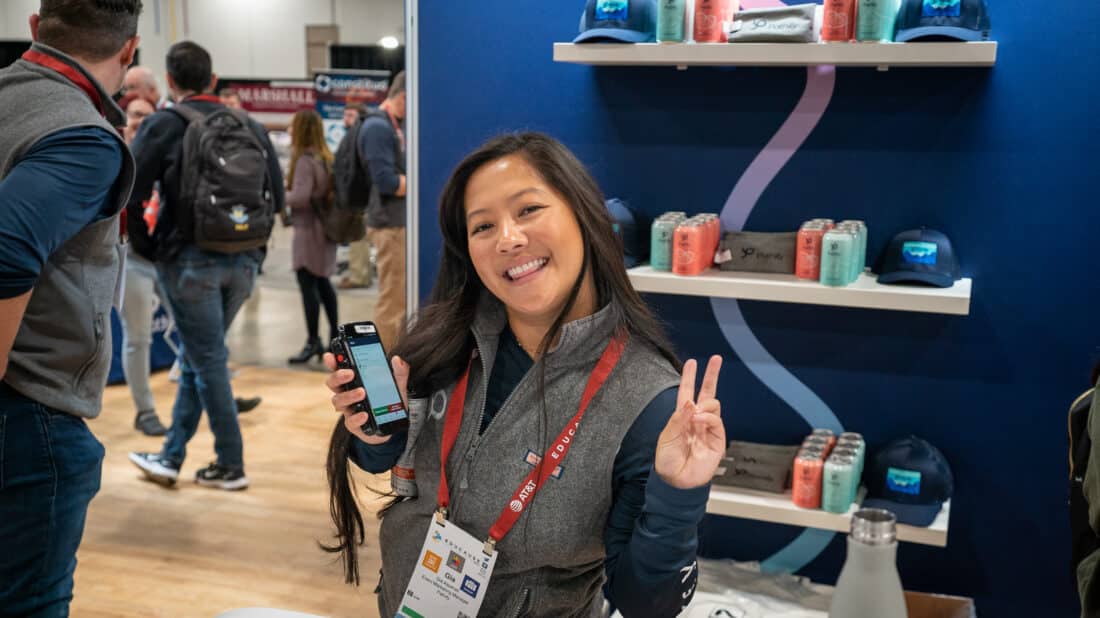At the end of October, we had the incredible opportunity to attend the annual EDUCAUSE conference in Denver where we had an amazing time connecting with higher ed professionals from all over the world. Whether it was talking about our platform on the show floor at our booth, socializing at our happy hour, or having some fun at our tailgate, we heard directly from diverse professionals about what they’re focused on right now.
One major highlight of our time at the conference was our session, titled “From Nice-to-Have to Necessity: A Fireside Chat on Campus Inclusivity,” moderated by our CEO, Chase Williams. He led a wide ranging conversation with a panel comprised of four of our awesome partners:
- Deborah Lee, Senior Director of Institutional Research and Effectiveness at Concordia University Irvine
- Raisha Cobb, Associate Provost & CIO at Winston-Salem State University
- Smitha Hanumantha, Project Manager at Gallaudet University
- Rene Eborn, Deputy of Digital Transformation & Associate Vice President at Utah State University
Fueled by coffee and optimism, we enjoyed a lively discussion about the ways these higher ed leaders are simplifying and optimizing their campus experience to be more inclusive of all students.
Much of the session covered the pivots forced upon these institutions by the pandemic. While the worst of this public health crisis is behind us, our partners found there was still much work to be done around keeping the momentum of these digital transitions. In addition, they focused on how to provide sustainable support moving forward as resources continue to be limited while the fight for prospective students becomes increasingly competitive.
Moving Forward to Improve the Student Experience
The efforts around these digital transitions included working with faculty, staff, and students to get buy-in for new tools. According to our panelists, this can be a big hurdle, especially after two tumultuous years of the pandemic and skepticism from colleagues with a lot on their plate. This buy-in is a crucial component of moving these new initiatives forward successfully. An example of this is to start with a smaller pilot to provide a proof of concept for a new idea and nurture champions who will help to lead the coalition building process at your campus.
The specific pivots that our panelists discussed focused on a few different tactics to implement inclusive practices. One broader goal was to include all students in the same community spaces versus separate social media channels or other platforms. This means all on-campus, commuter and online students can interact with one another as well as faculty and staff in the same portal with the same functionality.
In addition, the panelists shared how they were able to use these tools to help move on from over-reliance on analog, manual processes that had become ill-equipped for the needs of modern learners, such as paper forms for dropping classes. Raisha, for example, detailed that she was able to push past the inertia of these outdated workflows by leveraging the momentum of these digital transitions from the pandemic. Having more user-friendly digital processes helps to increase efficiency as well as reducing confusion amongst students, especially for first-generation students who aren’t going to be as familiar with these processes to begin with.
Lastly, one of the more prominent themes of the session was moving towards a targeted approach to student engagement. This means including a dedicated mobile presence for students to interact with, allowing far more dynamic involvement wherever the student is. In addition, it included thinking critically about not just constantly broadcasting announcements but using tools to drive action by students when necessary while reaching them in one user-friendly location with minimal distractions.
Our panelists noted that historically, they leaned heavily on website pages full of links to resources. These text-heavy pages can become overwhelming and lack any intuitive design to give high-level summaries of each student’s academic life or what they specifically need to know. There is also no customization that can be done so that students can see what they want, how they want it. Being inclusive of students can sometimes simply mean getting rid of barriers for them.
A concluding reflection we had from this incredible panel included sitting with the poignant thought shared by Deborah of not blaming students for not doing what we want them to do, but taking the time to process that feedback to do better. This encompasses the aforementioned efforts of creating dedicated mobile apps and pushing out relevant information in modalities other than email. We owe it to our students to make their experience as easy and intuitive as possible so that they can focus their time on succeeding in the classroom and thriving outside of it.
Many thanks again to all of our panelists and to everyone who came out to attend our session. We look forward to seeing folks at more conferences in the new year!
